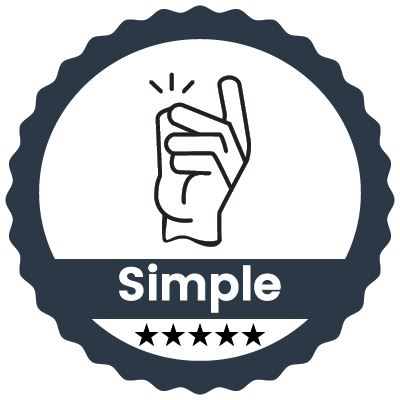A 401(k) is a retirement savings plan offered by many employers that has tax advantages for the saver. It's named after a section of the U.S. Internal Revenue Code. Here's a breakdown of its types, key features and benefits:
- Types of 401(k) Plans
- Key Features of a 401(k)
- Advantages of a 401(k)
- Disadvantages of a 401(k)
- Conclusion
- Here's how it benefits you
Types of 401(k) Plans
There are a few variations of 401(k) plans that employers may offer to their employees. The most common types include:
Traditional 401(k)
- Employees contribute a portion of their pre-tax income into the 401(k) account, reducing their taxable income for the year.
- Contributions and investment earnings are taxed upon withdrawal during retirement.
Roth 401(k)
- Employees contribute a portion of their after-tax income into the Roth 401(k) account.
- Qualified withdrawals, including contributions and earnings, are tax-free during retirement.
- Roth 401(k) plans are typically advantageous for individuals who expect to be in a higher tax bracket during retirement.
Safe Harbor 401(k)
- This type of 401(k) plan is designed to automatically pass certain IRS non-discrimination tests by offering employer contributions that are fully vested immediately.
- Employers are required to make contributions on behalf of eligible employees, either through matching contributions or non-elective contributions.
Solo 401(k) (Individual 401(k))
- Designed for self-employed individuals or business owners with no full-time employees other than themselves and their spouse.
- Allows for higher contribution limits compared to traditional 401(k) plans, enabling self-employed individuals to save more for retirement.
SIMPLE 401(k) (Savings Incentive Match Plan for Employees)
- Intended for small businesses with 100 or fewer employees.
- Combines features of a traditional 401(k) and a SIMPLE IRA, offering both employee and employer contributions.
- Simplified plan administration compared to traditional 401(k) plans.
Key Features of a 401(k)
It provides an overview of the essential elements of a 401(k) retirement savings plan, including tax-deferred contributions, employer matching contributions, contribution limits, investment options, vesting rules, withdrawal penalties, required minimum distributions, and loan provisions.
Tax-Deferred Contributions:
Tax-Deferred Contributions in a 401(k) refer to the practice of contributing a portion of one's pre-tax income into their retirement account. This means that the amount contributed is not subject to current income tax, effectively reducing the contributor&apso;s taxable income for the year. Taxes on these contributions are deferred until the funds are withdrawn during retirement. This allows the contributor to potentially lower their tax burden in the present while benefiting from tax-deferred growth on their investments until they are withdrawn in the future.
Employer Matching Contributions:
Many employers match a portion of your contributions. For example, an employer might match 50% of your contributions up to a certain percentage of your salary. This is essentially free money added to your retirement savings.
Contribution Limits:
401(k) Contribution Limits by Year: This table presents the maximum contribution amounts for 401(k) retirement accounts for each specified year (2020 to 2024), including elective deferrals, catch-up contributions for individuals aged 50 and over, total elective deferrals for those aged 50 and over, employer nonelective contributions, total contributions limit, and compensation limit.
| 401k Contribution Type | 401k 2024 Limit | 401k 2023 Limit | 401k 2022 Limit | 401k 2021 Limit | 401k 2020 Limit |
|---|---|---|---|---|---|
| Elective Deferrals | $23,000 | $22,500 | $20,500 | $19,500 | $19,500 |
| Catch-up Contributions (Age 50+) | $7,500 | $7,500 | $6,500 | $6,500 | $6,500 |
| Total Elective Deferrals (Age 50+) | $30,500 | $30,000 | $27,000 | $26,000 | $26,000 |
| Employer Nonelective Contributions | Up to 25% of Compensation | Up to 25% of Compensation | Up to 25% of Compensation | Up to 25% of Compensation | Up to 25% of Compensation |
| Total Contributions Limit | $69,000 | $66,000 | $61,000 | $58,000 | $57,000 |
| Total Contributions Limit (with catch-up) | $76,500 | $73,500 | $67,500 | $64,500 | $63,500 |
| Compensation Limit | $345,000 | $330,000 | $305,000 | $290,000 | $285,000 |
Investment Options:
401(k) plans typically offer a range of investment options, such as mutual funds, index funds, and company stock. The choice of investments varies by employer.
Vesting:
Vesting refers to the ownership of employer contributions. Some plans have immediate vesting, while others require you to stay with the company for a certain period before you can take full ownership of the employer's contributions.
Withdrawals and Penalties:
Withdrawals made before age 59 1⁄2 are generally subject to a 10% early withdrawal penalty in addition to regular income taxes, though there are some exceptions (e.g., for certain medical expenses or permanent disability).
Required Minimum Distributions (RMDs) must begin by April 1 following the year you turn 73 (for those born between 1951 and 1959) or 75 (for those born in 1960 or later).
Loan Provisions:
Some plans allow you to borrow from your 401(k). Loans must be repaid with interest within a certain period, and if not repaid, the loan amount can be considered a taxable distribution.
Advantages of a 401(k)
Tax Benefits: Immediate tax savings with traditional 401(k) or tax-free withdrawals with Roth 401(k).
Employer Match: Boosts your savings.
High Contribution Limits: Allows significant annual savings.
Payroll Deductions: Simplifies the saving process by automatically deducting contributions from your paycheck.
Disadvantages of a 401(k)
Limited Investment Choices: Typically, you can only invest in the options offered by the plan.
Early Withdrawal Penalties: Can significantly reduce your savings if you need access to your funds before retirement age.
Potential Fees: Some 401(k) plans have high administrative or investment fees.
Conclusion
A 401(k) is a powerful tool for retirement savings due to its tax benefits and potential employer contributions. However, it's important to understand the rules, fees, and investment options associated with your specific plan to maximize its benefits.
Ensure your employees stay informed about their 401(k) contributions with SecurePayStubs Paystub Highlights!
Employers can now easily emphasize their employees' 401(k) contributions directly on their paystubs, ensuring clarity and transparency.
Here's how it benefits you:
Clear Emphasis : Highlight 401(k) contribution details prominently on employee paystubs, ensuring they're easily noticed and understood.
Enhanced Awareness : Empower employees to stay informed about their retirement savings by prominently displaying their 401(k) contributions alongside their regular earnings.
Compliance Assurance :Maintain regulatory compliance by clearly presenting 401(k) contribution information on paystubs, fostering trust and transparency.
Simplify the communication of 401(k) contributions with SecurePayStubs Paystub generator. Empower your employees with clear and accessible information about their retirement savings!
This article has been updated from its original publication date of June 6 , 2024.



